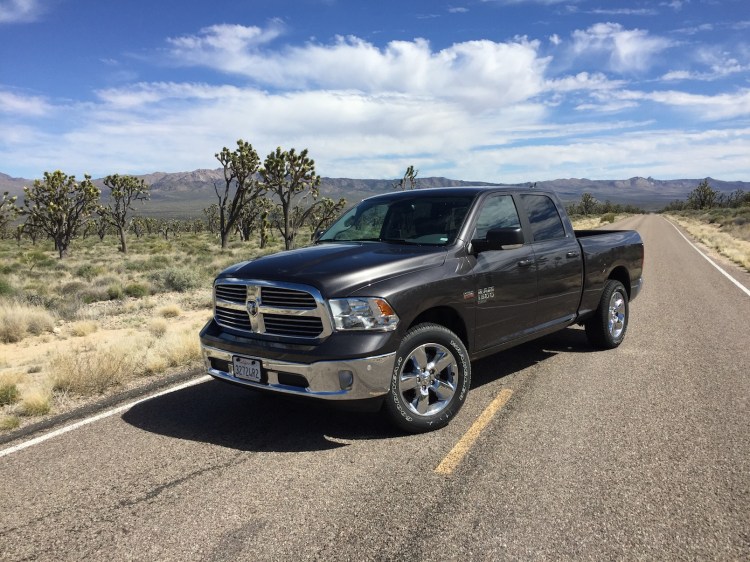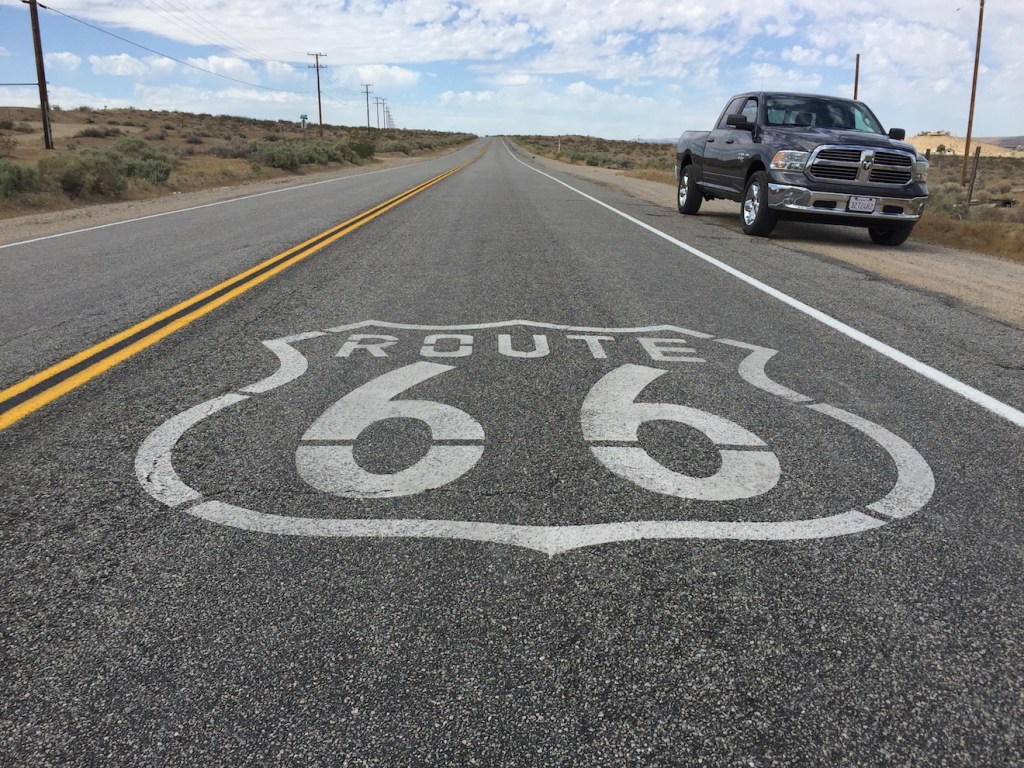With the heavy guitars of “Freebird” still ringing in my ears from the previous night’s Lynrd Skynrd concert, I left the parking lot of LAX, heading east out of the sprawling metropolis known as the City of Angels.
A brand new Ram Classic Crew Cab 2WD with Hemi Power, room for six, and Sirius satellite radio was perfect for my planned southwest road adventure seeking the original Route 66, exploring the Mohave Desert and points beyond, until I hit Las Vegas by nightfall and a red-eye flight home.
Less expensive to rent than any compact car, any Prius (obviously, the state car of California), or any compact crossover, the Ram proved a perfect companion to navigate LA’s vaunted freeways. It affords excellent comfort, great visibility, and ample power to merge and pass. In Maine, pickups rule the road. In the land of Tesla, hybrids, wild exotics and very old compact cars, the Ram is definitely a minority player.
With six and five-lane freeways the norm, traffic actually flowed smoothly on the path east out of the city. The truck’s ultra-quiet cabin and plush cloth seat afforded ample support and comfort, lessening the strain of finding the right off-ramps and connector loops to get to I-15. With highway gas signs boldly proclaiming $4.79 gasoline – for regular – I was grateful for the Ram’s extended capacity.
By Victorville, the first hints of the original Route 66 were clearly visible after exiting the freeway. A Route 66 museum rests downtown, across from the train station, while the two-lane leaving town is marked by many businesses that cling to the travelers seeking this infamous route used to populate the promised land of California during the Depression and the Dust Bowl years in the Midwest.
Once titled “Main Street America” as it traversed from Chicago through Missouri, Kansas, Oklahoma, Texas, New Mexico, and Arizona to California, the route’s first (of 2,448) miles were built in in 1926. Not completely paved until 1938, America’s first “interstate” was the gateway for millions to find a better life out West. The massive migration that occurred created new towns along the route, as thousands of Model T’s and Model A’s carried Americans to new homes. John Steinbeck’s classic “The Grapes of Wrath” called Route 66 the “Mother Road.”
Indeed. In 1900, LA’s population was barely 100,000. By 1930, more than 1.2 million people lived in Los Angeles, and LA County had grown from 170,000 to 2.2 million people. Today, LA County has 10 million citizens, one-fourth of California’s residents.
Leaving Victorville, the road dips and curves through the desert-like topography past Oro Grande, where one of the region’s largest rock-crushing/paving/cement plants resides. Across the high plain, beyond the ever-present railroad tracks populated with endless trains, rest hundreds of abandoned jets and planes, their tailfins dotting the blue skyline in front of the snow-capped mountains. Things, all things, are bigger in California.
The Ram Classic is the holdover design selling alongside the all-new Ram pickup. FCA wanted the Classic produced to create a price advantage over newer Ford and Chevy designs, a product plan that is paying huge dividends. So far in 2019, combined sales of the new Ram and the Ram Classic have eclipsed Chevy for the No. 2 spot on the sales charts.
Pressing eastward, every driveway shows signs of old, abandoned trucks and cars, outdated signs and vestiges of drive-ins, cafés, and gas stations that once served Route 66 travelers 24-7. Even the roadway is painted with Route 66 logos every few miles, lest you feel lost wandering through the desolation.
By Barstow, a small western city with a HUGE train problem, evidence of the Route 66 tourist trade is plainly evident everywhere as the town celebrates – and welcomes – all who pursue this legendary trail. Motor Courts and old diners welcome all for a taste of car-history.
After Barstow, I raced the multiple trains that blitz the black-lava covered horizon by jumping on I-40 heading for Ludlow and the Mojave Desert. Turning north, the Ram swiftly heads over the mountain range into Kelso, a former WWII supply area for mining and minerals to aid the war effort. Again, a giant train yard supplied the numerous munitions and metals operations in California needed for the war. Today, it is truly a whistle-stop.
Outside Nipton, another blip on the map, rests the Ivanpah Solar-thermal Power Plant, the world’s largest experiment with solar-generated steam power from mirrors and solar panels. Covering five square miles next to Primm, Nevada, the facility helps the nearby Hoover Dam power up southern California. Tall, metal, high-transmission lines are spread across the desert, sending Hemi-like power out of the desert to Las Vegas, and Los Angeles.
My Good Friday adventure was vastly entertaining: 370 miles of history, fun, and exploring with a Ram Classic covering some of America’s classic roads. What a great country.
Copy the Story LinkSend questions/comments to the editors.





Success. Please wait for the page to reload. If the page does not reload within 5 seconds, please refresh the page.
Enter your email and password to access comments.
Hi, to comment on stories you must . This profile is in addition to your subscription and website login.
Already have a commenting profile? .
Invalid username/password.
Please check your email to confirm and complete your registration.
Only subscribers are eligible to post comments. Please subscribe or login first for digital access. Here’s why.
Use the form below to reset your password. When you've submitted your account email, we will send an email with a reset code.